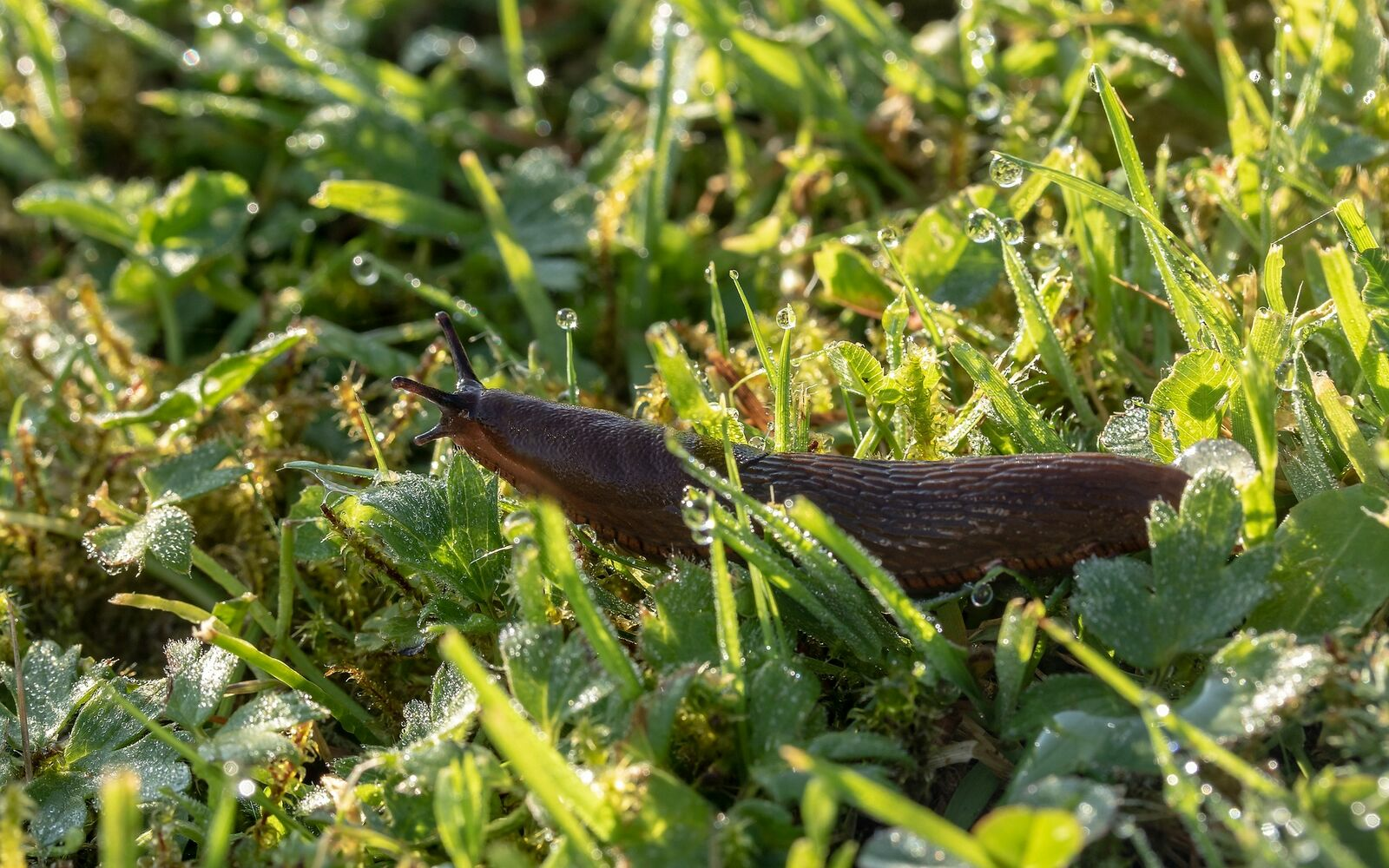
Garden Snails: How to Get Rid of Them
Slugs and snails can cause a lot of damage in the garden. You put a lot of work into growing and caring for vegetable and fruit plants and in one night everything is eaten away. However, not every slug is a plant pest. Some species are even beneficial insects and help you in the garden. In this article, you can find out what types of snails there are and how you can control and repel harmful snails.
This Article Contains:
- Snails in the Garden: Are Snails Harmful to Plants?
- Do Snails Eat Plants?
- Predators of Snails: Runner Ducks & Other Beneficial Insects
- Collecting Snails
- Slug Fencing, Household Remedies & Co: Alternatives to Slug Pellets
- Protecting Raised Beds From Snails
- Slug Protection: Herbs and Slug-Resistant Plants
- Frequently Asked Questions About Fighting & Keeping Snails Away:
Quick Overview
Snails in the Garden: How to Keep Plant Pests at Bay
- Collect snails
- Encourage beneficial insects and keep runner ducks if possible
- Set up a snail collar or fence
- Scatter eggshells, rock dust, coffee grounds, sawdust or sand around the plants
- Water in the morning so that the soil dries out by the evening, making it more difficult for snails to move around
Snail-Resistant Plants
- Repellent plants: mustard, nasturtium, fern and tomato leaves.
- Herbs: thyme, sage and rosemary
- Flowers: begonias, dahlias, thistles, stonecrop, funkia, daisies, geranium primroses, peonies and the weeping heart
- Bulbous and tuberous plants: Hyacinths, crocuses and daffodils
- Woody plants: Hydrangeas and rhododendrons
Snails in the Garden: Are Snails Harmful to Plants?
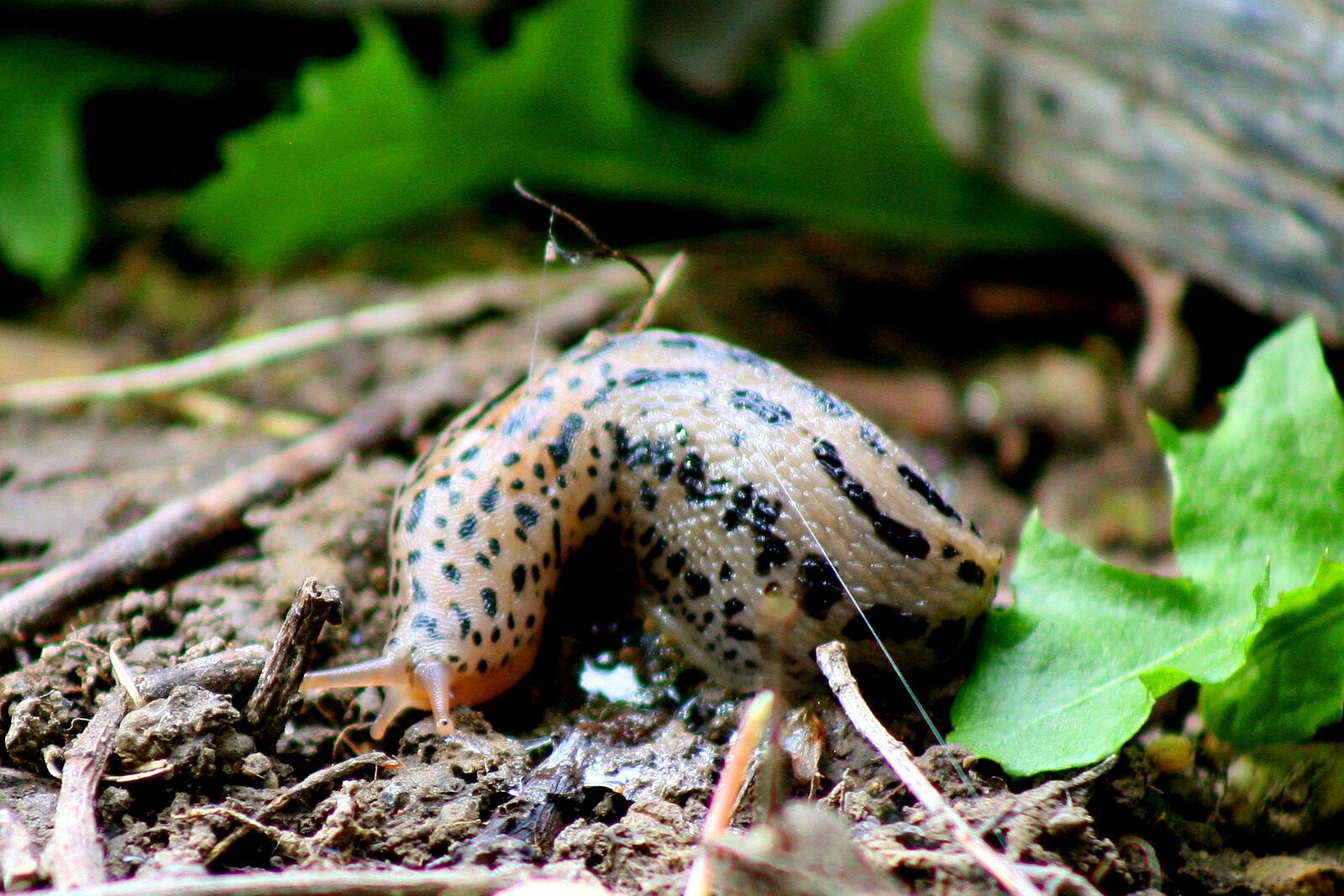
Snails that you find in the garden are generally divided into those without shells (slugs and slugs) and those with shells (mostly slugs). But even within these families, there is a wide variety of snail species and not all snails are harmful to your plants. You can find out more about other Plant Pests in our overview article on the subject.
Slug species like to help themselves to your vegetables. However, most slug species, which also have no shell, are often beneficial insects in the garden. The tiger slug even eats other slugs and snails and helps you to control pests. It is native to Germany and can be bought online and released in the garden.
The first snail species (young field snails) are already out and about in the garden from January on frost-free days. Snails feel particularly at home in damp conditions. You can recognize their presence by traces of slime on the leaves they have eaten, unless you catch them in the act. They like to hide under wood, tarpaulins or undergrowth and can quickly devour entire beds if you don't discover them in time and protect your plants from them. Snails reproduce rapidly and one snail can lay up to 400 eggs.
Do Snails Eat Plants?
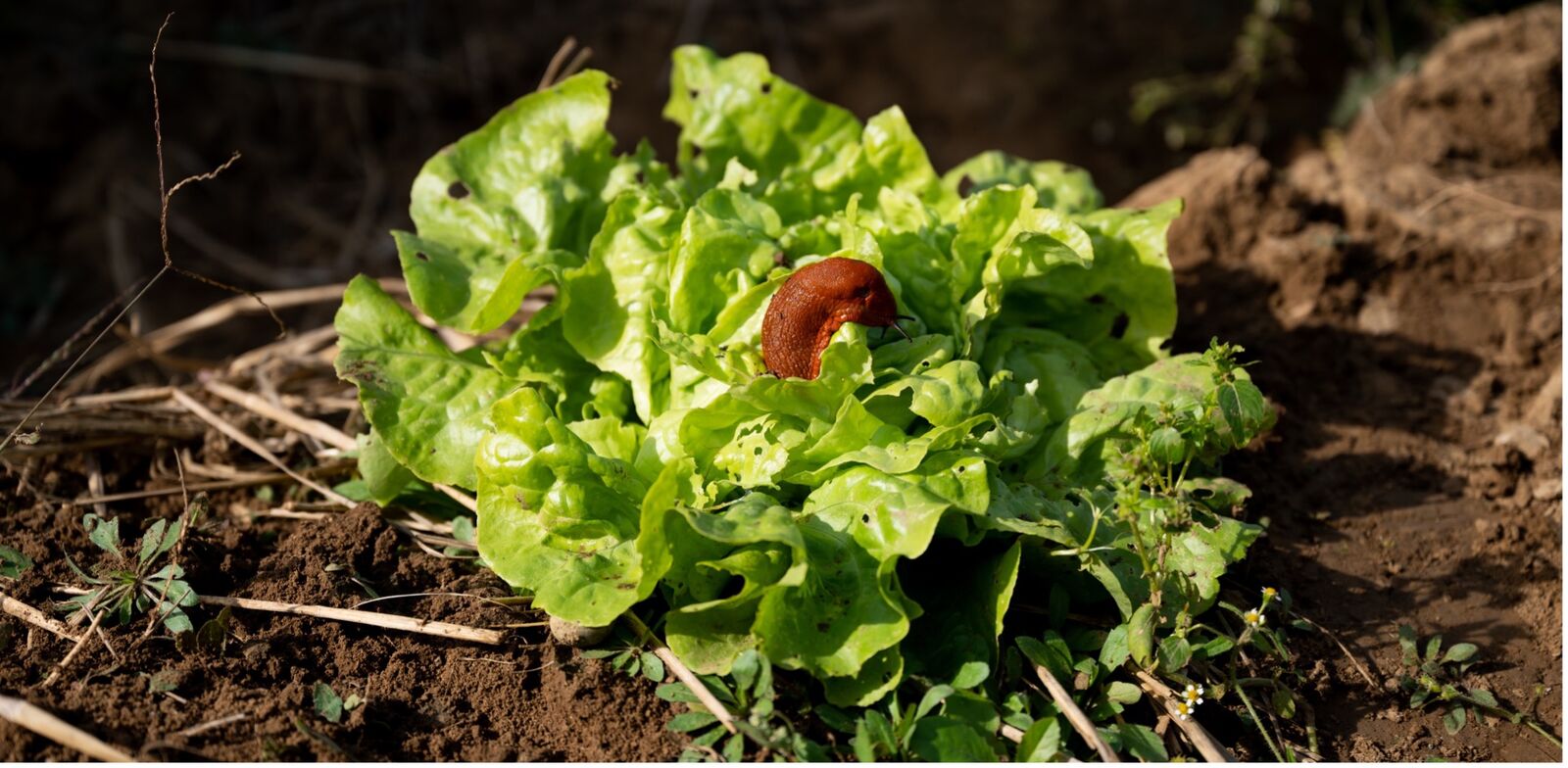
Snails are omnivores. They feed on leaves, stems, fruit and dead plant parts. Harmful snails, such as the Spanish snail and other snails as well as field snails, prefer to eat living plants and can thus cause considerable damage.
Vegetables with tasty leaves such as lettuce, chard, cabbage and spinach are particularly popular with snails. Peas, cucumbers, pumpkins, melons, celery and zucchinis are also often eaten by snails when they are still small. You should therefore protect young plants from snails above all else.
In a very well-kept and tidy garden, even snail species that normally feed on dead plant parts do not always find something to eat. Then these species (such as the vineyard snail) can also go for vegetables and other plants.
Predators of Snails: Runner Ducks & Other Beneficial Insects

Runner ducks, but also normal ducks and chickens, are very good snail exterminators. However, you should have enough space for these interesting animals and check with your neighbors to see if they agree. The ducks can be quite noisy and may disturb your neighbors. In addition, runner ducks are not loners and like to be in company. You should, therefore, keep at least two or three ducks together. They will then search your garden for snails and quickly devour a whole lot of snails.
In addition to runner ducks, you can also encourage other beneficial insects in your garden: Hedgehogs or common toads are natural enemies of slugs. Leave a pile of leaves, other dead plant material or a hedgehog house in the garden for hedgehogs over the winter. Common toads prefer to sleep in similar places to hedgehogs. The animals also feel at home in compost. You can read more about beneficial insects in our article on Beneficial Insects and Other Animals in the Garden.
Birds are also natural predators of slugs and snails. You can find out how to attract birds to your garden in our article on Bird-Friendly Gardens.
Nematodes can also help with slug control. They are parasites and kill slugs within a few days. However, they can also feed on the roots of your vegetables and if you have sown marigolds or marigolds in your bed, you should avoid nematodes. They are attracted to marigolds but die from a substance secreted by marigolds. Minimal digging or no-dig and avoiding pesticides promotes healthy soil life, which also encourages nematodes.
When buying beneficial insects, please bear in mind that you are interfering with the natural ecosystem when you release them into the garden. They will only settle in places where they can still find enough food and places to sleep later on. In tidy gardens, the food supply is often rather low and sometimes beneficial insects will help themselves to your vegetables.

Learn More About Pests
We have compiled an overview of common pests in the vegetable garden and explain how you can recognize and get rid of them.
Read More HereCollecting Snails
Collecting snails is tedious, but a very effective method of controlling the pests. However, as snails are nocturnal, it is best to search for them in the early morning, at dusk or after it has rained. Lay out boards, large plant leaves or other hiding places for snails in your garden. They accumulate underneath and you can easily collect them from there later and save yourself some time and effort.
Where to Put the Collected Snails?
Once you have collected the snails, you should move them to an area far away (at least 25 m/27 yd) from your garden. There they can no longer harm your plants.
Slug Fencing, Household Remedies & Co: Alternatives to Slug Pellets
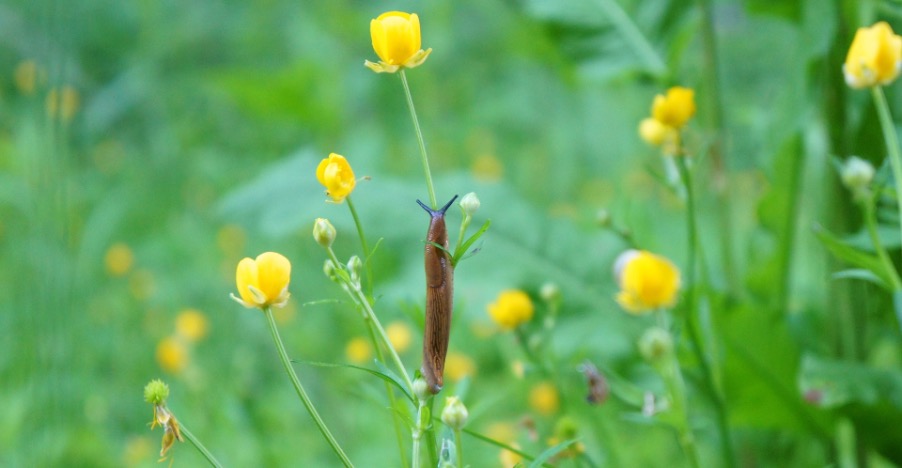
Once slugs have arrived in the garden and have multiplied, often only a combination of different measures will help. It is best to use mild remedies, as slug pellets are not only harmful to slugs and snails, but can also cause damage to pets, small children or other wild animals and become dangerous.
Proper soil preparation is another point that can help to keep the slug population in check. If you dig up the soil in winter, slug eggs will come to the surface and freeze to death in the frost. However, useful soil organisms can also be disturbed or freeze to death. This is therefore only recommended for heavier soils, as the beds need to be prepared. If you have medium to light soil, it is best to avoid digging at all.
Water properly: Slugs and snails can move around more easily on damp surfaces. It is therefore best to water your garden in the morning in summer. The soil will be dry by the evening, making it harder for nocturnal snails to move around.
Make Your Own Snail Collar: Ideas for Defense
Another natural method of slug control is to erect barriers. These prevent the snails from reaching your plants. Snail fences or snail collars are the most popular method. You can even easily make these yourself by upcycling used yogurt pots or similar. It is important that you stick them at least 5 cm/2 in deep into the soil, otherwise the snails can crawl underneath. You can also spread natural barriers such as sand, sawdust or eggshells around your beds, as these materials are unpleasant for snails to cross. However, scattering natural barriers is often much less of a deterrent than actual slug fences or slug collars.
- Snail collars & fences: They can be made of plastic or sheet steel and have a bent edge at the top. This prevents the snails from reaching your plants. Use snail fences to fence off entire beds , snail collars are used for individual plants that are particularly popular with snails.
- Protective rings made of sawdust or rock flour should help against slugs in the short term until the next rain. Rings made of coarse sand, which the snails tend to avoid, can help for longer.
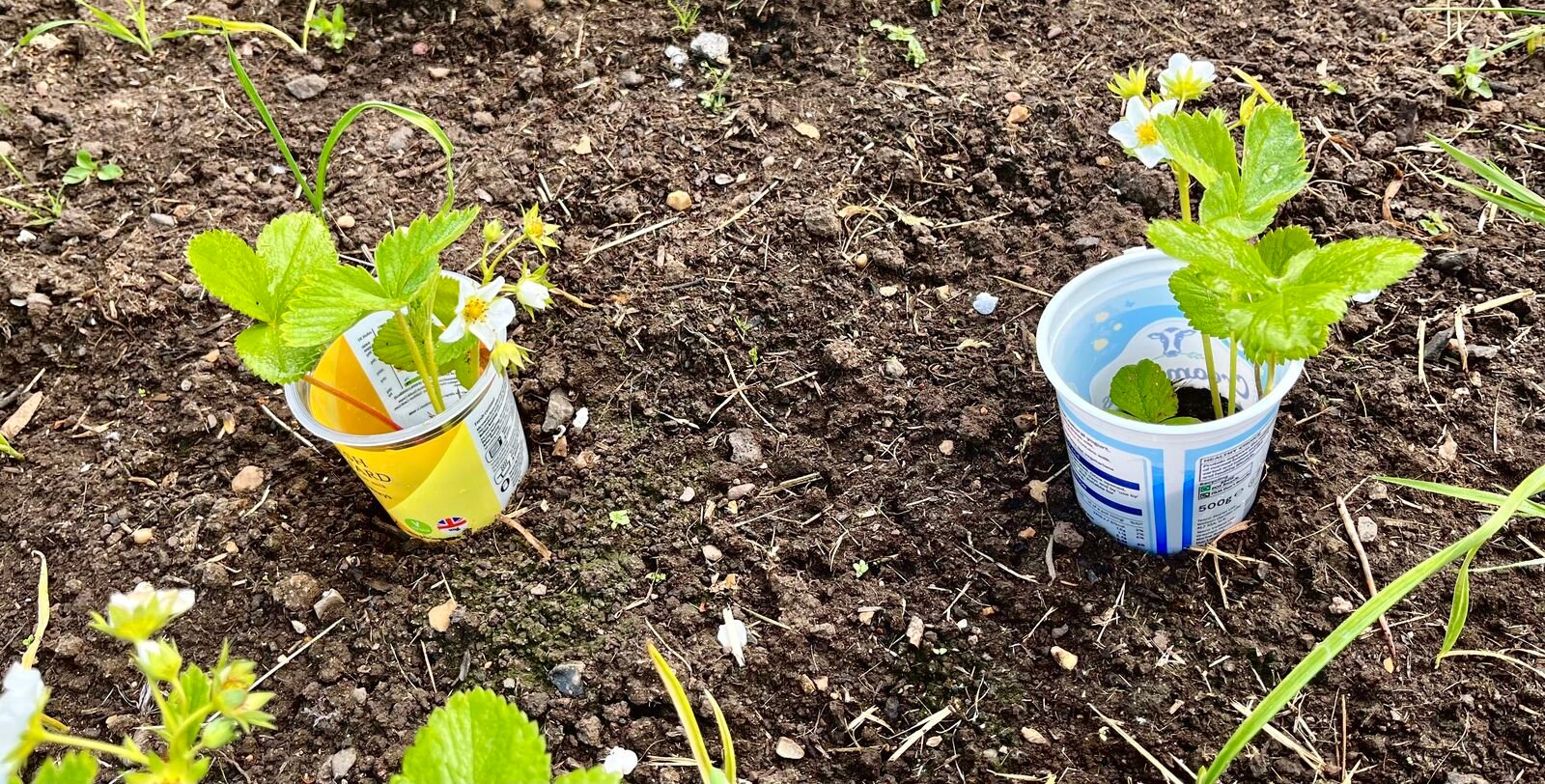
Oat Flakes & Coffee Grounds Against Snails
Home remedies such as oatmeal and coffee grounds can also help against snails. Slugs and snails do not like the smell of coffee and therefore avoid areas sprinkled with coffee grounds. In large quantities, however, coffee grounds can acidify the soil, which some plants do not tolerate well. Oat flakes serve as an attractant. They are eaten by the snails, which then die.
Copper Tape Against Snails
Copper is a heavy metal and can accumulate in the soil over time, causing environmental pollution and potentially harming soil life. Some snail species are also said to cross the belt despite the unpleasant sensation of contact with copper. In our opinion, there are certainly better methods to combat slugs and snails, which are also more environmentally friendly as they do not put additional strain on the soil and its living creatures.
Catching Snails With a Beer Trap
To do this, fill a preserving jar about halfway with beer and bury it in the bottom. The rim should protrude a little, as this will prevent leaf beetles from falling into the jar and drowning. However, we do not recommend the beer trap , as slugs can still detect the smell of beer up to 100 m/109 yd away. You may therefore attract more slugs than you actually have in your garden. There is also a risk that beneficial insects such as bees and bumblebees will be poisoned by the beer.
Protecting Raised Beds From Snails
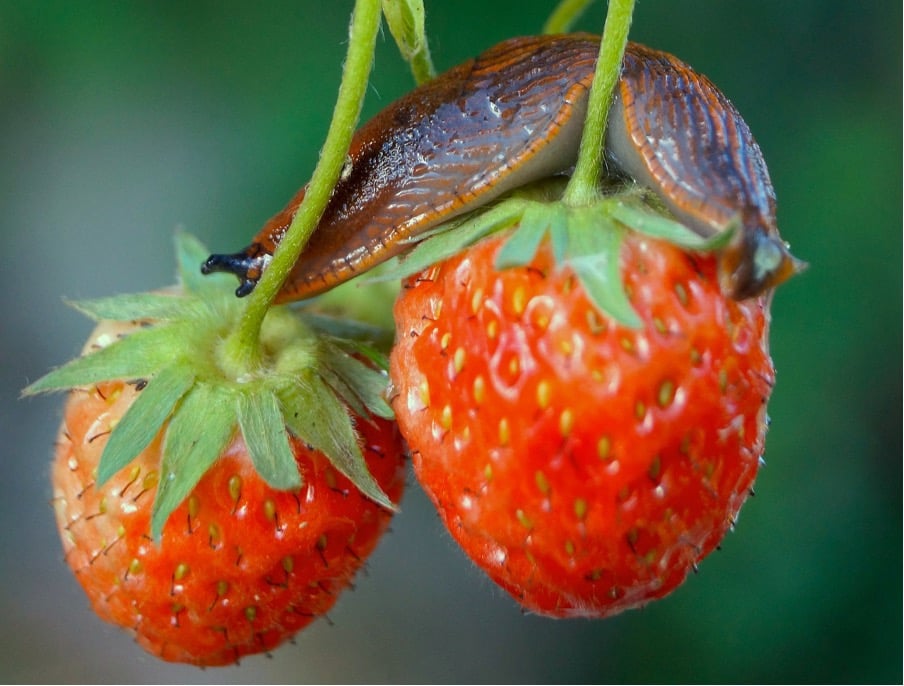
A raised bed protects your plants from slugs and snails better than beds that are at ground level. The high position makes it harder for snails to reach the plants. Additional protective measures such as a snail fence or other barriers make it even more difficult for snails to reach your plants.
Slug Protection: Herbs and Slug-Resistant Plants
Some plants are avoided by snails or are resistant to them. However, slug-resistant plants do not necessarily provide protection for other plants in their vicinity. They are more likely to keep snails away from themselves than from other plants in the vicinity. Lupins, delphiniums or marigolds, on the other hand, serve as bait plants and attract slugs, which means they are more likely to leave other plants alone. Generally speaking, sacrificial plants are a good way of keeping pests away from your plants, which also gives other animals and insects more to eat.
Which Plants Do Snails Dislike?
- mustard, nasturtium, fern and tomato leaves have a repellent effect.
- artichokes, chicory, lamb's lettuce, fennel, endive, potatoes, garlic, leeks, chard, radicchio, rhubarb, asparagus, onions and sugar loaf are normally of no interest to snails.
- herbs such as wild garlic, savory, borage, garden cress, chamomile, rosemary, sage, chives, thyme, hyssop and lemon balm are avoided by snails due to their smell.
Plant Sprays as Snail Protection
Homemade or store-bought plant slurry can also help protect your plants from slugs and snails. To do this, spray particularly vulnerable plants with well-diluted slurry on dry days. Slurry made from compost is also said to help against slugs and snails. However, this method is only recommended for small infestations. You will also need to repeat spraying with liquid manure often to keep the slugs away.
Slurry made from these plants helps against snails:
- begonias, ivy, ferns, elder, lavender, moss, rhubarb, yarrow, blackcurrants, pine cones, tomatoes and wormwood
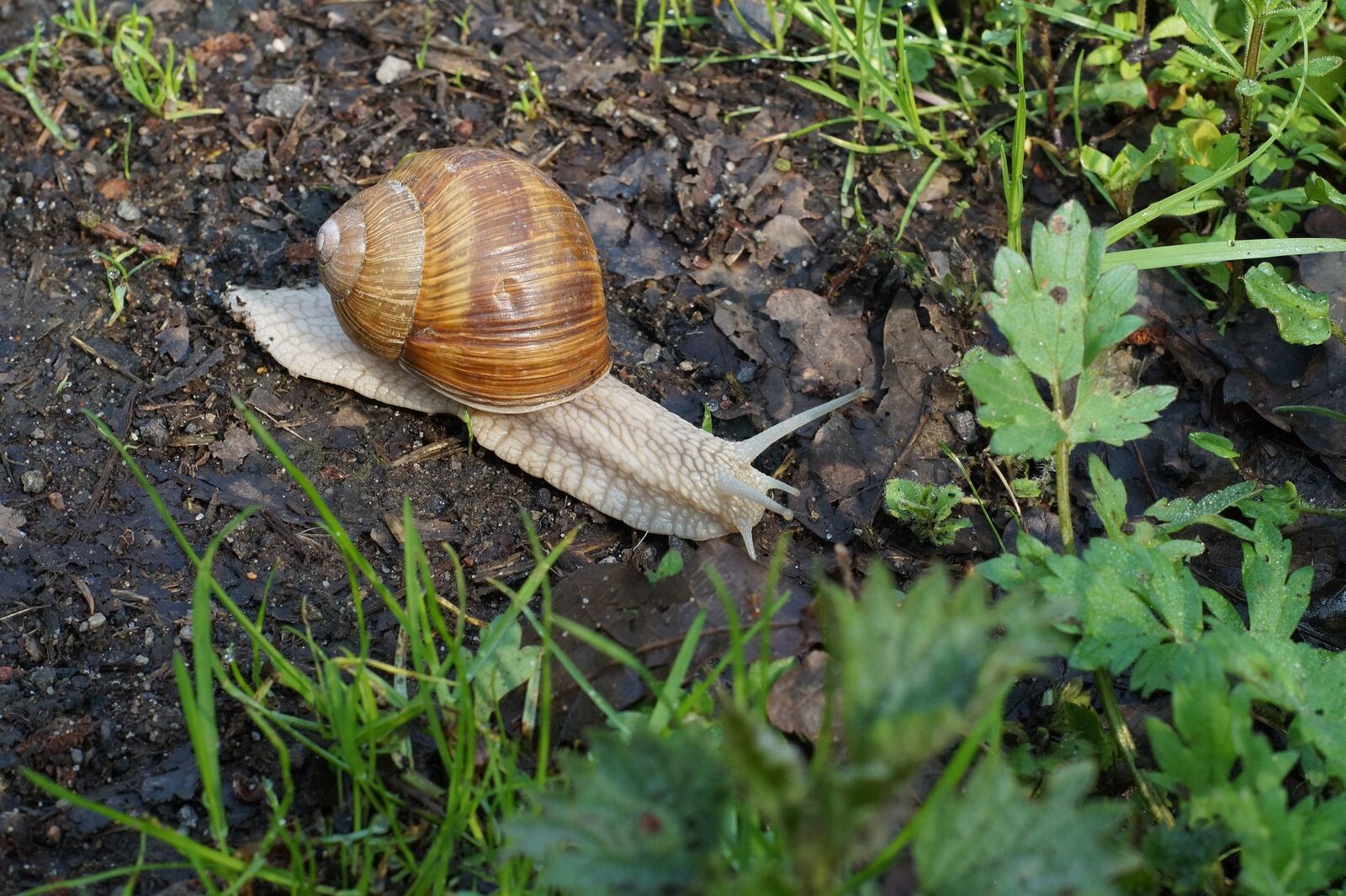
Which Flowers Do Snails Not Eat?
Primroses and peonies are poisonous to snails or taste unappetizing. Begonias, dahlias, stonecrop, funkia, geranium and the weeping heart have hard or hairy leaves that are difficult to eat. Bearded carnations, thistles, daisies, toadflax, snapdragons, male fritillaries, poppies, portulaca, marigolds, stonecrops, tulips and forget-me-nots are also often slug-resistant.
Bulbous and tuberous plants
Many bulbous and tuberous plants with hard and sharp leaves, such as hyacinths, crocuses and daffodils, are not eaten by slugs and snails. The bulbs or tubers are often so far underground that they are spared by slugs and snails.
Woody plants
The thick leaves and hard bark of hydrangeas and rhododendrons are not popular with snails. However, make sure you buy native species (Rhododendron ferrugineum, R. hirsutum and R. tomentosum). This will promote the natural species composition. Hydrangeas also have double flowers and do not provide food for insects. Therefore, plant insect-friendly plants next to hydrangeas to still provide some food for pollinators.
If you have any questions or comments, please write to us at [email protected]. Would you like to receive helpful gardening tips all year round and plan your own beds optimally? Then register here or download the Fryd app for Android or iOS.
Fryd - your digital bed planner
Cover picture by Myriams-Fotos on Pixabay.

Marielena
Marielena studies agricultural and environmental sciences. She gardens at home and at an allotment and likes to try out new things.
Learn MoreCurrent Topics in the Community
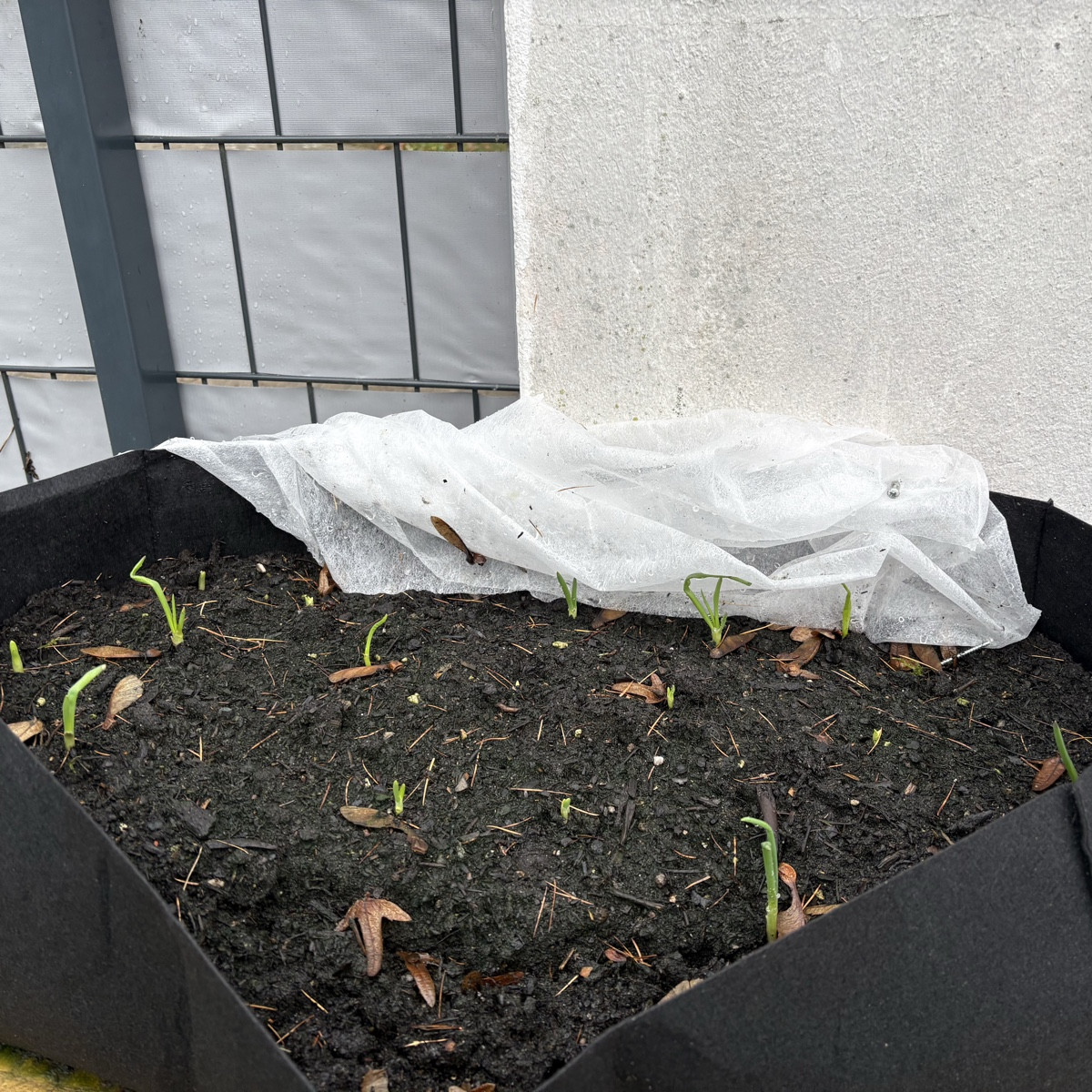
My winter onions are also growing quite well. They are of the Red Cross variety. I planted them on 28.10 in a felt pot 60x30x20 cm
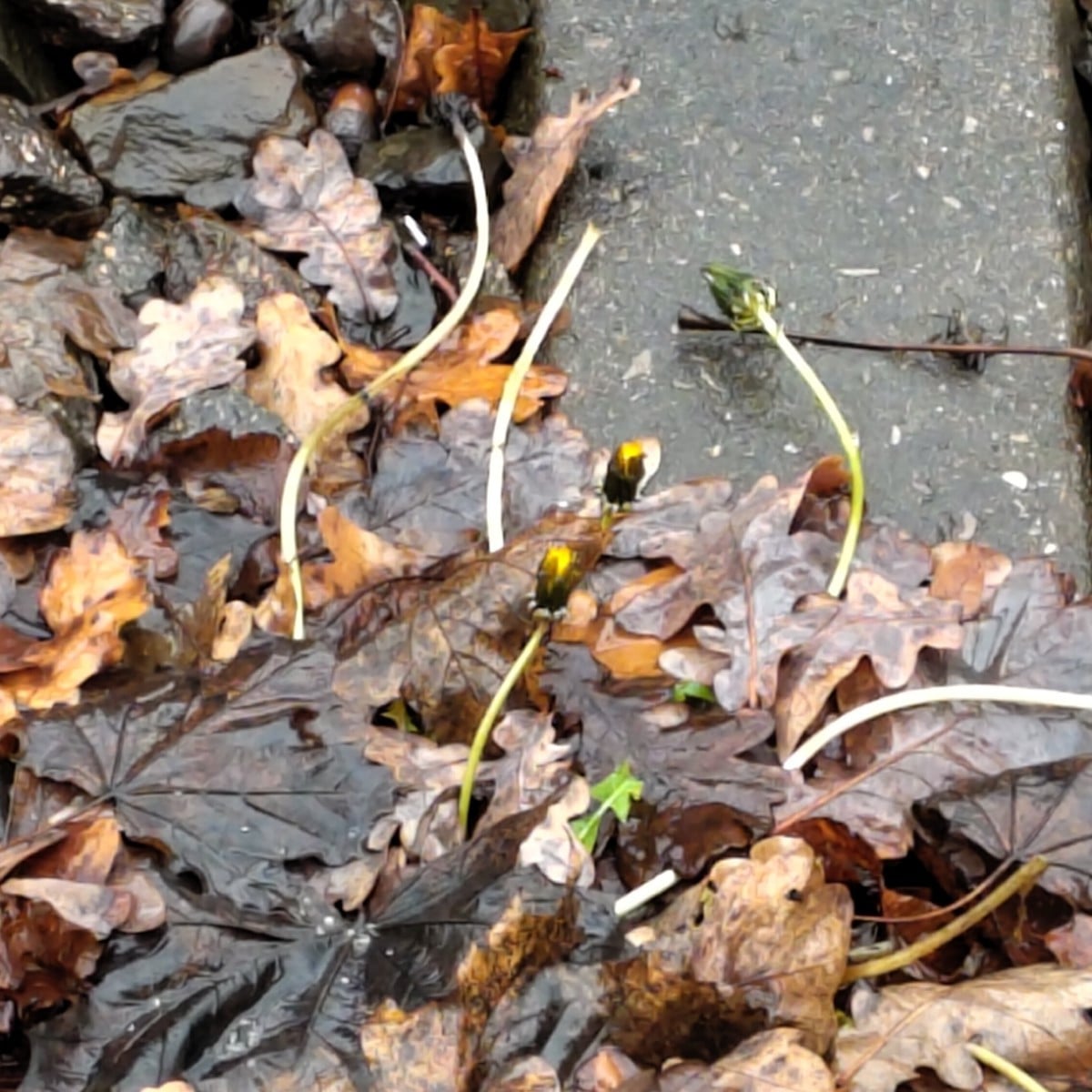
Liked 4 times
Another post from the curiosities section: I noticed this dandelion at the streetcar stop in a 'wintry' 13°C weather. It obviously thinks that snow and double-digit frost were enough winter and is now pushing new flowers through the foliage. It's a shame it's by the tracks, otherwise it would probably have ended up in my salad. 😋
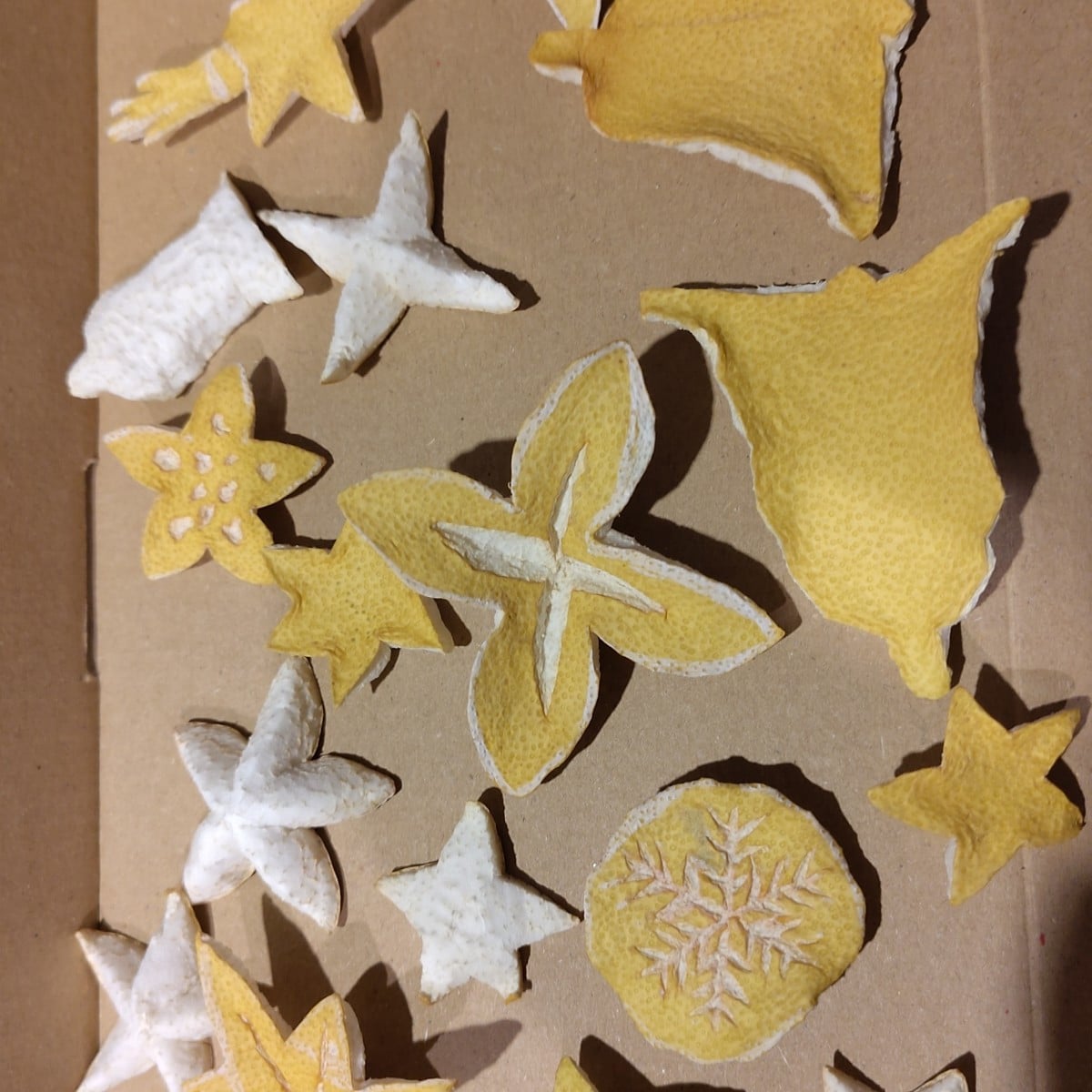
Liked 15 times
As a suggestion for those who eat citrus fruits and have some time in the evening: simply cut a few simple shapes out of them with a sharp knife and dry them on the heater. The next day it was bone dry in our house ;)
Show 3 answersPopular Articles

Overwintering Parsley: How to Do It Successfully

How to Grow Lettuce in Winter: Varieties, Sowing, Harvesting

Growing Sage Plant: Tips for Sowing and Harvesting

What Herbs Can Be Planted Together?

Create & Design a Permaculture Garden

Overwintering Plants: Tubs, Pots and Raised Beds

Pruning, Fertilizing & Propagating Currants: Care Tips

Pruning Raspberries: How to Do It

Vegetable Garden With Greenhouse: How to Use Greenhouse Effect

Winterizing Beds and the Garden: How to Do It
FAQ
What helps naturally against snails?
Setting up snail fences and collars, collecting them and encouraging beneficial insects such as tiger snails, birds, hedgehogs and toads are natural remedies against snails.
What helps permanently against snails?
Snails are an important part of the natural ecosystem. Complete eradication is therefore neither sensible nor possible. However, a combination of control methods can help to reduce the slug population in your garden.
Can coffee grounds be used to repel snails?
Yes, coffee grounds can actually help against snails. Snails don't like the smell of coffee. However, coffee grounds can make the soil more acidic, which is not good for some plants.
Which plants don't like snails?
Mustard, nasturtium, fern and tomato leaves; herbs (e.g. sage, rosemary, thyme); flowers (e.g. daffodils, dahlias, begonias, stonecrops or daisies) do not like snails.